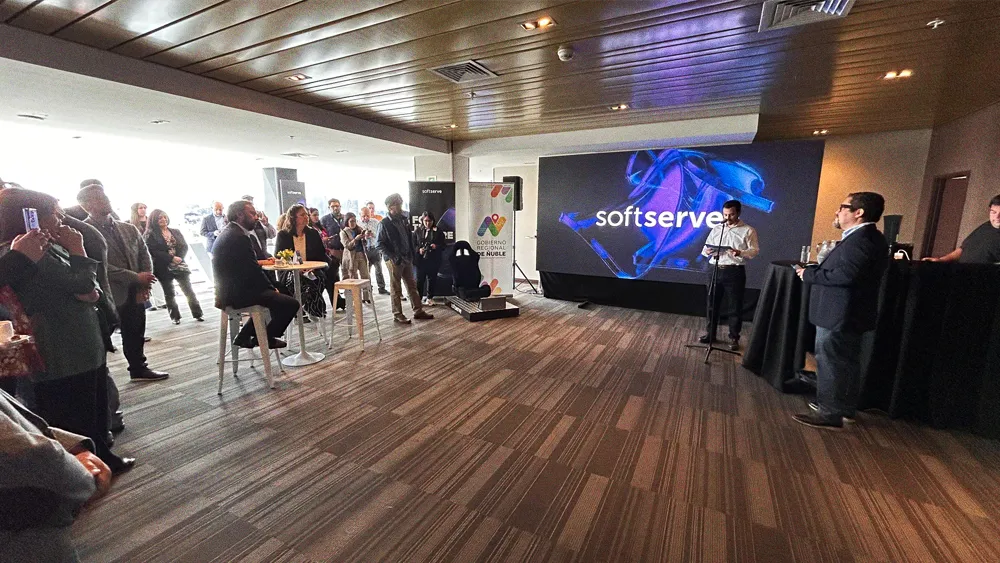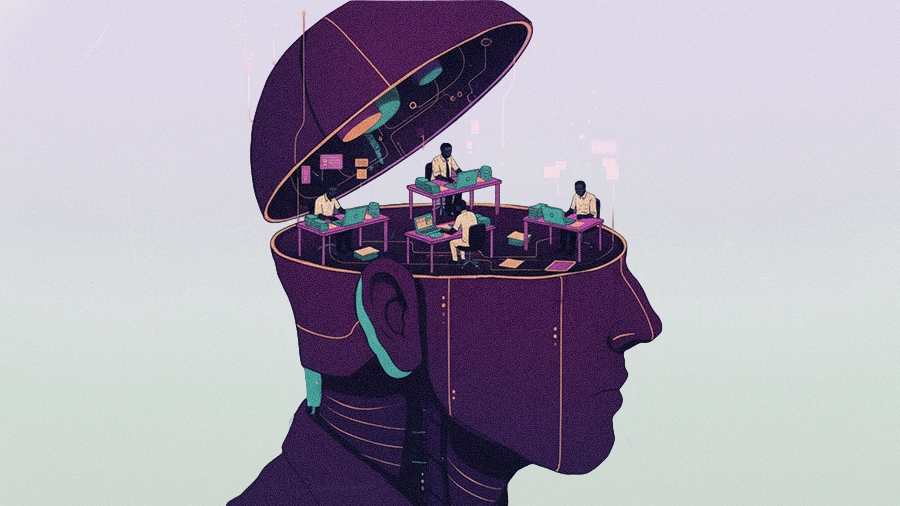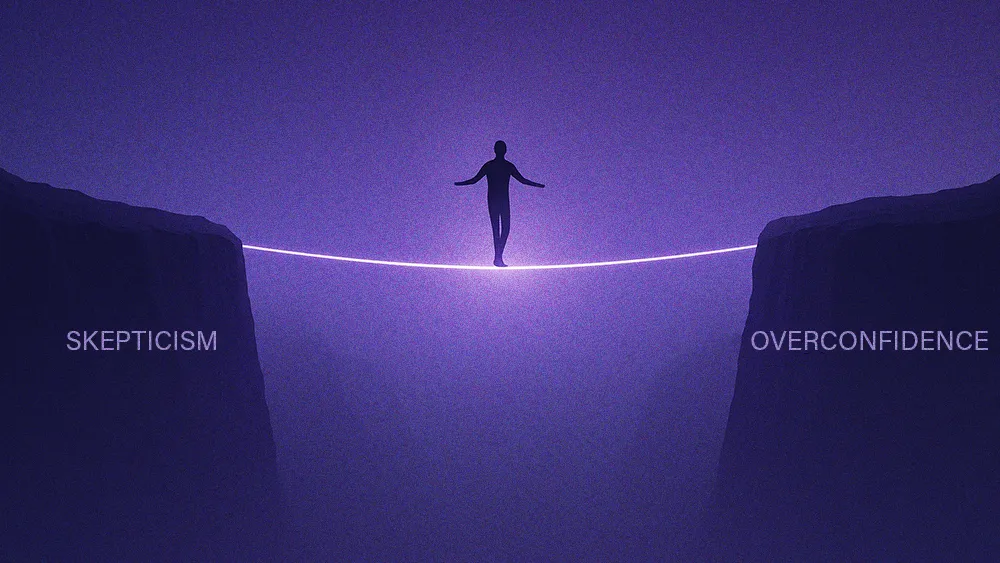Inside the White House initiative hoping to make AI literacy a foundational skill for all workers

Key Points
The White House’s AI Action Plan signals that workforce strategy is a national priority, yet only one in three workers has received any formal AI training.
Alex Swartsel, an Associate Vice President at Jobs for the Future (JFF), offers an insider’s perspective, as her organization helped shape the federal plan.
Swartsel encourages leaders to establish AI literacy as a universal baseline, upskilling internal talent to build a resilient workforce.
She asks leaders to measure AI’s success not by productivity, but by its ability to create better, human-centered jobs that pay a living wage.
It starts with grounding your strategy in a long-standing truth of business: your best prospective talent is your current talent.

Alex Swartsel
Associate Vice President
Jobs for the Future (JFF)
The federal government’s White House AI Action Plan makes it clear that workforce strategy is a national priority. Far beyond Silicon Valley, the disruption is already reshaping hospitals, trucking fleets, schools, and factories. The quick spread of AI is outpacing readiness, with only one in three workers reporting any formal training on AI tools from their employer. This significant gap represents a systemic risk that leaders can no longer ignore, begging the question: How do we turn AI disruption into AI resilience?
To make sense of this new territory, we spoke with Alex Swartsel, an Associate Vice President at Jobs for the Future (JFF), where she leads JFFLabs and the new Center for Artificial Intelligence & the Future of Work. It’s a fitting role, as JFF didn’t just comment on the action plan, they helped shape it, giving Swartsel an insider’s perspective that covers both the plan’s intent and its ultimate potential.
Building the baseline: She says the first step toward building AI resilience is establishing a new, universal baseline of skills. This need extends beyond software to the physical world, from nursing jobs to long-haul transportation to small businesses. The Action Plan acknowledges this by calling for an upskilled workforce to build the underlying AI infrastructure like data centers, and it even proposes tangible policy levers like expanding tax incentives for employer-led training. The plan’s message is that AI literacy has evolved into a foundational competency for fueling the entire economy. “AI literacy and skill development has to be a priority across the board,” Swartsel says.
New table stakes: With needs changing faster than curricula can be developed, traditional, siloed talent pipelines are proving too slow. Swartsel understands the challenge, noting the need to “tighten those cycles” between identifying a skill gap and providing the training for it. But the most compelling answer, she says, lies in a different model of collaboration that begins inside an organization’s own walls. “It starts with grounding your strategy in a long-standing truth of business: your best prospective talent is your current talent.”
Executing this philosophy often involves a dual “top-down and bottoms-up” approach. While leadership sets the vision for growth, innovation is often already happening on the ground floor. Employees are now bringing their own AI tools and workflows to their jobs, creating a powerful, organic source of discovery that leaders can learn to harness. “That innovation is starting to filter from the ground up. People are BYOA-ing (bring your own algorithm). They’re bringing their own tools to work,” Swartsel says.
Human skills wanted: With the rapid pace of change, the old model of a single, stable career path is fading, making adaptive skills more valuable than ever. “The days of any of us picking a career path and staying on it for the entirety of our working lives are long gone,” she says. As automation begins to handle repetitive work, durable human skills like analytical thinking, creativity, and empathy take on new value. JFF’s own call to action on next-generation skills emphasizes these qualities.
By freeing up their people, organizations can cultivate a culture of “intrapreneurship,” where employees are empowered to focus on top-line revenue generation and new business growth. Recognizing AI’s potential beyond simple productivity, many forward-thinking leaders are using it to fuel innovation. As Swartsel puts it, “The more that businesses can start to build flexibility into their models and look together with their people at what tasks can be automated or displaced, the more they can think creatively. Any business that does that is going to be in a position to win.”
Ultimately, the White House AI Action Plan serves as a catalyst for leaders. While the promise of AI boosting efficiency is clear, the central challenge for leaders is using it to create resilient, human-centered workforces. The answer, Swartsel says, can be found by asking a series of direct questions. “The final questions for us are simple: Is AI making us all better off? Is it creating quality jobs that pay a living wage and offer flexibility and benefits?” These, she suggests, are the signal leaders should be watching.
The final questions for us are simple: Is AI making us all better off? Is it creating quality jobs that pay a living wage and offer flexibility and benefits?

Alex Swartsel
Associate Vice President
Jobs for the Future (JFF)
The final questions for us are simple: Is AI making us all better off? Is it creating quality jobs that pay a living wage and offer flexibility and benefits?

Alex Swartsel
Associate Vice President
Jobs for the Future (JFF)
Related articles
TL;DR
The White House’s AI Action Plan signals that workforce strategy is a national priority, yet only one in three workers has received any formal AI training.
Alex Swartsel, an Associate Vice President at Jobs for the Future (JFF), offers an insider’s perspective, as her organization helped shape the federal plan.
Swartsel encourages leaders to establish AI literacy as a universal baseline, upskilling internal talent to build a resilient workforce.
She asks leaders to measure AI’s success not by productivity, but by its ability to create better, human-centered jobs that pay a living wage.

Alex Swartsel
Jobs for the Future (JFF)
Associate Vice President

Associate Vice President
The federal government’s White House AI Action Plan makes it clear that workforce strategy is a national priority. Far beyond Silicon Valley, the disruption is already reshaping hospitals, trucking fleets, schools, and factories. The quick spread of AI is outpacing readiness, with only one in three workers reporting any formal training on AI tools from their employer. This significant gap represents a systemic risk that leaders can no longer ignore, begging the question: How do we turn AI disruption into AI resilience?
To make sense of this new territory, we spoke with Alex Swartsel, an Associate Vice President at Jobs for the Future (JFF), where she leads JFFLabs and the new Center for Artificial Intelligence & the Future of Work. It’s a fitting role, as JFF didn’t just comment on the action plan, they helped shape it, giving Swartsel an insider’s perspective that covers both the plan’s intent and its ultimate potential.
Building the baseline: She says the first step toward building AI resilience is establishing a new, universal baseline of skills. This need extends beyond software to the physical world, from nursing jobs to long-haul transportation to small businesses. The Action Plan acknowledges this by calling for an upskilled workforce to build the underlying AI infrastructure like data centers, and it even proposes tangible policy levers like expanding tax incentives for employer-led training. The plan’s message is that AI literacy has evolved into a foundational competency for fueling the entire economy. “AI literacy and skill development has to be a priority across the board,” Swartsel says.
New table stakes: With needs changing faster than curricula can be developed, traditional, siloed talent pipelines are proving too slow. Swartsel understands the challenge, noting the need to “tighten those cycles” between identifying a skill gap and providing the training for it. But the most compelling answer, she says, lies in a different model of collaboration that begins inside an organization’s own walls. “It starts with grounding your strategy in a long-standing truth of business: your best prospective talent is your current talent.”

Alex Swartsel
Jobs for the Future (JFF)
Associate Vice President

Associate Vice President
Executing this philosophy often involves a dual “top-down and bottoms-up” approach. While leadership sets the vision for growth, innovation is often already happening on the ground floor. Employees are now bringing their own AI tools and workflows to their jobs, creating a powerful, organic source of discovery that leaders can learn to harness. “That innovation is starting to filter from the ground up. People are BYOA-ing (bring your own algorithm). They’re bringing their own tools to work,” Swartsel says.
Human skills wanted: With the rapid pace of change, the old model of a single, stable career path is fading, making adaptive skills more valuable than ever. “The days of any of us picking a career path and staying on it for the entirety of our working lives are long gone,” she says. As automation begins to handle repetitive work, durable human skills like analytical thinking, creativity, and empathy take on new value. JFF’s own call to action on next-generation skills emphasizes these qualities.
By freeing up their people, organizations can cultivate a culture of “intrapreneurship,” where employees are empowered to focus on top-line revenue generation and new business growth. Recognizing AI’s potential beyond simple productivity, many forward-thinking leaders are using it to fuel innovation. As Swartsel puts it, “The more that businesses can start to build flexibility into their models and look together with their people at what tasks can be automated or displaced, the more they can think creatively. Any business that does that is going to be in a position to win.”
Ultimately, the White House AI Action Plan serves as a catalyst for leaders. While the promise of AI boosting efficiency is clear, the central challenge for leaders is using it to create resilient, human-centered workforces. The answer, Swartsel says, can be found by asking a series of direct questions. “The final questions for us are simple: Is AI making us all better off? Is it creating quality jobs that pay a living wage and offer flexibility and benefits?” These, she suggests, are the signal leaders should be watching.




